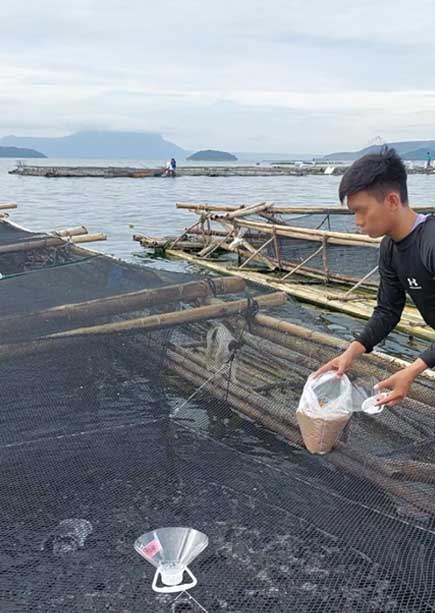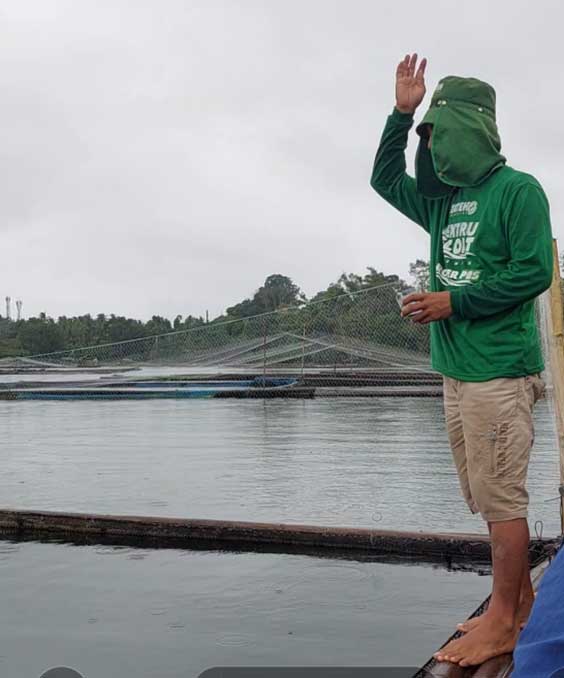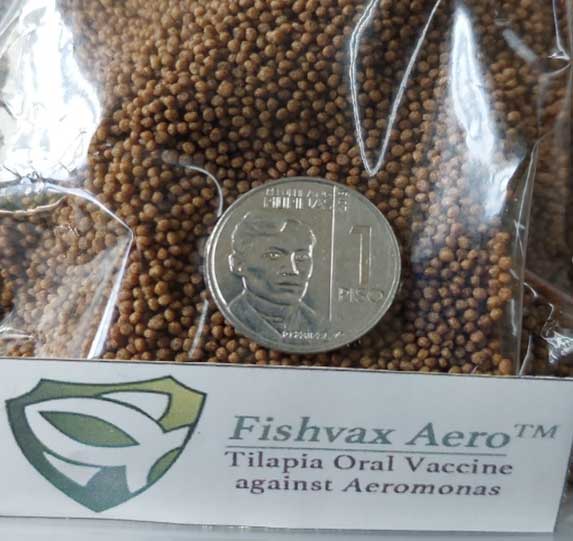The Department of Science and Technology funded a study on fish oral vaccine to help the local tilapia industry combat bacterial infections.
Through the project, “Use of Fish Oral Vaccine in Tilapia Aquaculture System,” under the DOST – Collaborative Research and Development to Leverage Philippine Economy (DOST-CRADLE) Program, the Trinity University of Asia (TUA) in partnership with Santeh Feeds Corporation produced an oral vaccine to combat the problem of bacterial infection caused by Motile Aeromonad Septicemia (MAS) in fish, which continues to increase mortality rates in local species like tilapia.
This project noted that in Taal Lake alone, about 50% of approximately 600 million (M) fingerlings stocked annually died of infection and other causes. Fish mortalities are caused by various factors including bacterial infections, such as highly fatal hemorrhagic septicemia or MAS. Around P150 M are lost yearly due to fingerling mortalities.
“Through R&D, we can support local industries by developing science-based solutions to address their concerns,” said DOST Secretary Renato U. Solidum, Jr. “The fish oral vaccine through fish feeds will be able to support our tilapia industry, most especially our backyard farmers, since it is easy to administer and is a cost-effective solution in ensuring that the fish stock is less susceptible to diseases.”
Since vaccines are only available by injection where inherent challenges are highly possible, this DOST CRADLE Project implemented by TUA took the fish industry to another step by developing a fish oral vaccine that could be incorporated into fish feeds.
“This oral vaccine was initiated to increase fish production through better fish health management and possible prevention of the threat of zoonotic infection that might come from these pathogens,” said Dr. Anacleto M. Argayosa, the project leader from TUA.
Tilapia microbial pathogens are mass-cultivated and inactivated using applicable techniques. The inactivated cells are protected through a naturally occurring nanomaterial as a carrier. The encapsulated bacterial cells carrying the antigens are mixed with the feeds and given as normal feeds during mass immunization.
“When we were offered to partner with Dr. Argayosa on this project, we were hopeful that the vaccine will solve the farmers’ long-running problem of low fish survival. We also hope that the cost of the vaccine that is added to the fish feed will not significantly impact the cost of the feed. If this happens, we are helping the farmers and the tilapia farming industry to become more sustainable,” said Mr. Daniel V. Cabrera, National Sales Manager of Santeh Feeds Corporation.
Tilapia has been considered one of the most affordable fishes in the country. Its annual sales volume of around P24 billion (B) has contributed to the country’s economic growth and food security. The Philippines is one of the top tilapia-producing countries in the world. However, due to bacterial infections, an increasing tilapia mortality rate has been observed.
The DOST-funded project has successfully produced a fish oral vaccine called Fishvax Aero deployed in Laguna and Batangas. As a major accomplishment, 50% relative percent survival (RPS) of the fingerlings tested in San Luis, Batangas showed promising results for further application of the Fishvax Aero for the second dose and subsequent grow-out. Survival rate through the RPS is the standard value to measure the vaccine’s efficacy. The vaccine tends to be more effective with higher RPS.
Continuous application of the Fishvax Aero in the succeeding cultures and phases minimizes tilapia mortalities.
On the other hand, a policy on using fish oral vaccine technology is set to be recommended upon project completion. This technology is expected to benefit the tilapia fish farmers and would eventually contribute to the aquaculture industry in the country. (Rizza B. Ramoran, DOST-PCAARRD S&T Media Services)





















